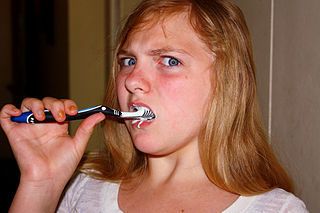From Guest Blogger Izzy: Eco-Friendly Changes to your Daily Routine

This article aims to pitch changes anybody can make to their daily routine. Making a complete switch to an eco-friendly lifestyle is not something that can be achieved overnight. But these changes can all be implemented by the end of the week if you put the effort in.
Nothing is too drastic, and nothing is too expensive. If you want to make the switch, these are some of the easiest first steps to take.
Start Cycling
We’ll start with the one that will likely be the hardest to adopt. Your daily commute is loaded with possibly harmful habits. If you drive yourself to work without passengers, you are burning fuel for your benefit alone. You’ll also likely be sat in traffic, a big red zone for environmental harm.
So what can you do about it? Well, if your commute isn’t very far, try switching to cycling. The green benefits speak for themselves, plus it represents a huge saving and keeps you fit and healthy. But just because cycling isn’t feasible, doesn’t mean your options are basically “drive or work at home”. Public transport has come on leaps and bounds in the past 10 years, so it may be worth seeing if it’s realistic to catch the train.
If not? Then at least you can carpool. You’re still running a car, but if you have three other passengers, that’s three other cars that are being kept off the road.
Drive Smartly
Speaking of carpooling, you can reduce your CO2 footprint significantly if you combine all of your car journeys into one solitary run. If you have to go shopping, pick up some items, and go to a friends house, try to do them all in one journey. You’ll be surprised how many miles you are shaving off your journey.
On top of that, try using a map app that calculates the amount of fuel you are using for this journey/journies. This will help you figure out the most fuel efficient way to get around, which will once again save you money as you reduce your environmental impact.
Online Everything
As we said at the top, this isn’t an article full of suggestions to cut your environmental impact to zero – these are changes aimed simply at reducing that impact. So while you may think a laptop isn’t a solution to green problems, either due to the materials used to build it or it’s reliance on electricity, it’s actually a very useful tool in the race to be greener.
For starters, shopping online saves a lot of car emissions. Instead of driving around everywhere to pick up clothes, electronics or groceries, you can order them all online and cut down on your pollution. The groceries will still need to be delivered, but one delivery van will be dropping off several loads of groceries in one trip, which is better than all of those customers driving to and from the supermarket by themselves.
Furthermore, most businesses that would traditionally communicate with you via letters (banks, billing services etc.) now offer paperless options. Make the switch, and you’ll be saving not only paper, but the fuel used to transport the letter to you. This extends to magazines, newspapers and books too!
Water
One of the first things people think of conserving when they want to “go green”, water is a tricky one, as we use it in so many different ways. Knowing how best to save it isn’t always clear, but one thing you should definitely stop doing is buying bottled water. Almost everything about bottled water makes no sense environmentally. For a start off, public access water has to pass stricter levels of purity than bottled water does. Which in turns makes the volume of plastic bottles used to bottle the water even more ludicrous, as it isn’t like they are being wasted in order to give the public “better water”.
Instead, get a reusable water bottle, and fill it from the tap. And then to further reduce your water usage, take shorter showers. The bathroom is full of ways to save water, but this is the biggest. Don’t be indulgent – get in and get out as fast as possible!
Non-Toxic
A lot of household products you use every day can either contain harmful ingredients, or have damaging effects on the environment when used. Figuring out which products are “good” and which products are “bad” used to be hard work, but thanks to the increasing levels of environmental awareness worldwide, this isn’t such a hard task anymore.
Most brands will want to spotlight their products as eco-friendly, so always look for some indication that the product you are buying is at least somewhat “green”. You may need to do further research to see which products are the best, but this too isn’t difficult thanks to the internet. Cleaning products are the worst offenders, both in their manufacture and their usage, so take extra care with these, but even certain types of make-up can be harmful, so be on the lookout.
